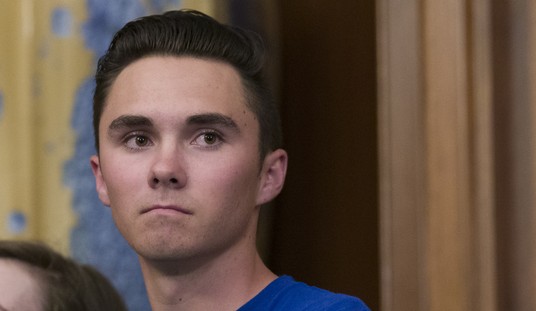The three weeks left until the midterm elections appears an eerily quiet calm before the storm. And quiet though it may be, it presages a coming asteroid strike that Washington’s beltway elites are doing their level best to ignore.
For those who care to look, the danger is obvious, yet the present calm creates the illusion that safety for Democrats is possible. Unfortunately, the damage coming is not like anything seen by the left or the right in generations. The damage promises to be so severe that existing labels of severity won’t suffice.
Right now, well before the coming Election Day cataclysm, there are 10 Senate races where Republican challengers are polling ahead of the Democrat incumbent. There are at least four other races where incumbent Democrats are at or below 50% support. There are 80 House races where the Democrats are polling below 50%, and in nearly half of those the Republican is ahead. Presently Democrats hold 26 governorships, yet according to existing polls, they lead outside the margin of error sufficiently to retain only 16 mansions.
Devastating numbers like these should be viewed by the party as an existential crisis.
It is ironic that this is the current state of affairs, as the Democrats have had quite a bit of time to prepare. Rather than acknowledge that their errors caused the political calamity, Democrats in Congress and their enablers in the White House have stubbornly announced that they can ride this out. Their willful refusal to accept the reality of the impending danger they face approaches suicidal. Their efforts to go on offense, including the “blame Bush,” “foreign donors,” or “extremist/racist” themes, are not only ineffective, they are rallying an already energetic GOP and independent electorate.
The warning signs have been steady, a long time in the making. The political Doppler system issued its first alert with the creation of the “Tea Party” movement, which spontaneously grew out of CNBC correspondent Rick Santelli’s rant on the floor of the Chicago Mercantile Exchange on February 19, 2009. The next sign was the surprisingly large number of “Tea Party” participants at an anti-tax rally on April 15 — media accounts reported over half a million participants nationwide. This was followed by a series of disruptive and boisterous town hall meetings through the summer of 2009 over the pending ObamaCare effort.
At the same time, President Obama’s approval ratings began their dramatic descent, a steady downward trend that would erase nearly 35 points of his public support and put him among the least popular presidents heading into a first midterm in 40 years. If you can imagine, the ratings of Congress plummeted even faster — first mirroring, then coveting the ratings of British Petroleum.
By the time of the sizable GOP victories last year in Virginia and New Jersey (states that Obama had carried in 2008) and the upset election of Scott Brown in Massachusetts this year, the die had been cast.
Throughout all of this, there has been no willingness on the part of leading Democrats to reassess their agenda.
Over the objections of the public and some Democrats in Washington, the White House and Nancy Pelosi used strong-arm partisan tactics to ensure that their legislative agenda ultimately passed. The public was treated to the Cornhusker Kickback and the Louisiana Purchase, actions that were a gross violation of the spirit and the letter of the president’s pledge to bring a new political tone to Washington.
A whopping 3 million more Republicans voted in this year’s primaries than Democrats, even though there are at least a third more self-identified Democrats than Republicans. This summer, pollsters like Gallup and Rasmussen began showing double-digit preferences for the GOP on the generic ballot.
But rather than repent, the White House pursued recrimination. Senior White House staff blamed progressive activists for being dispirited and ungrateful, attributing their behavior to political naiveté. Pledging that President Obama’s presence on the campaign trail would resolve any issues, the White House offered little to no real response to the changed political dynamic.
Congress would ultimately shift course and leave town early — with pending business left undone — in order to attend to its re-election.
It was at this point that the White House and senior Democrats began circulating the meme that the tide was turning. Calling their benefactors in the media, they explained that things weren’t as bad as they seemed. The new storyline was that the situation of Democrats was improving. Allegedly as more Americans paid attention to the upcoming election and realized just how out of the mainstream the GOP challengers were — the tantalizing message the White House suggested — voters resolved to vote for the Democrats. Combined with a newly resurgent left, suddenly Democrats were back in the game. None of this was true.
Independents have turned to the GOP at such unprecedented levels that pollsters report voters across the board give Republicans a double-digit preference over Democrats. In 1994, the generic ballot from the week of the election had the race dead even. On Election Day Republicans won by 7. Generic surveys now show an 8 to 15 point advantage for the Republicans.
Preferring deception to transparency, it will likely take a week or two before the media and Democrats admit that things are just as bleak or worse than they were thought to be in August. But by then it will be too late.









Join the conversation as a VIP Member